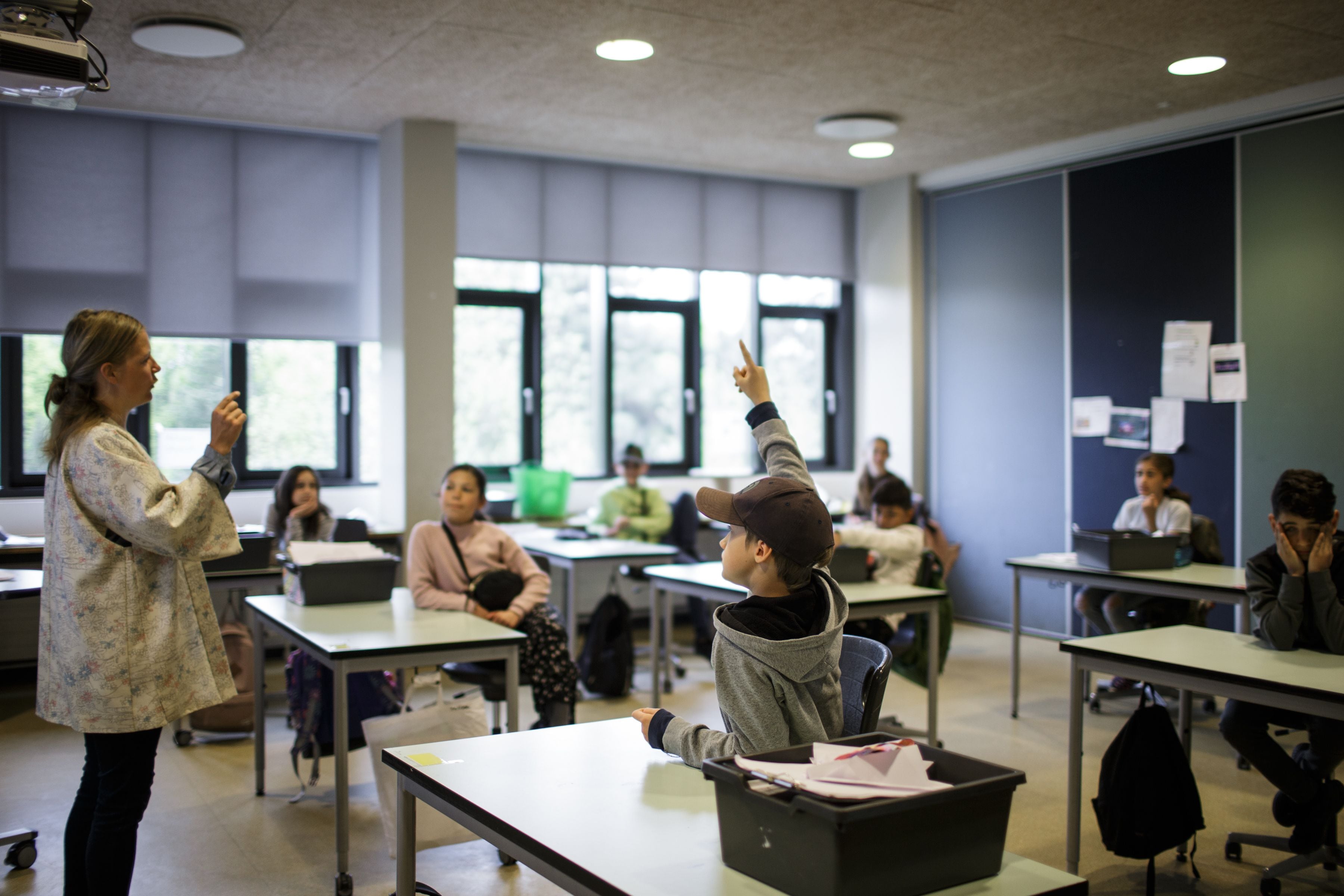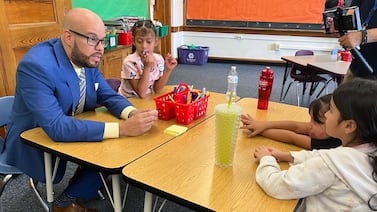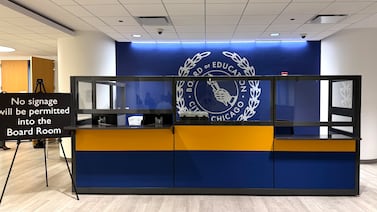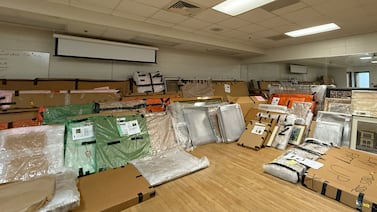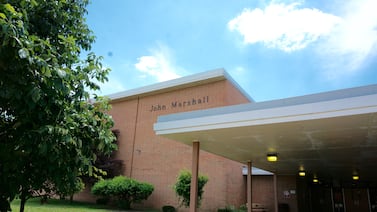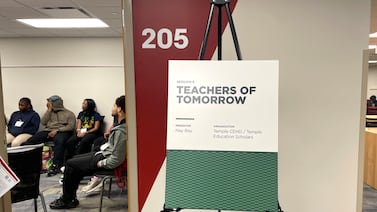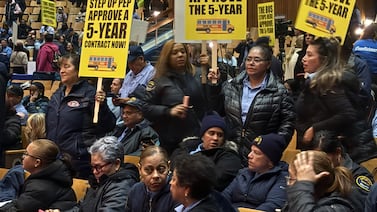When school buildings started to close due to the coronavirus, many teachers and parents thought the disruption would last a few weeks. As the school closures extended, many have clung to the idea that if they made it to fall, life would return to normal.
That’s not looking so certain right now.
Teachers unions are warning that sending educators into crowded buildings without widespread testing for coronavirus will amount to an unacceptable risk. Officials in big city districts are finding that some ideas for keeping students further apart, like running extra bus routes and reducing class sizes, could be expensive at a time when budgets are tight. And worries about a second wave of infections have some wondering what once felt far-fetched: Should students just keep staying home?
“We don’t have a single member who is not planning for some amount of distance learning next year,” said Mike Magee, the CEO of Chiefs for Change, a nonprofit network of district and state education leaders from across the country. “These things are impossible to predict, but it would be foolish not to have a system ready, if in fact you need to continue distance learning or if you have to return students to distance learning at some point next year.”
Students and teachers not returning in the fall would bring a host of challenges. Parents would face the continued burden of providing or arranging emergency child care, limiting their ability to work and efforts to kickstart the economy. Kids without computers or tablets would continue to depend on what districts provide, and students requiring special education services and English learners would almost certainly go without some of the support they would have received in person.
But COVID-19 can be deadly, and reopening schools will require some ability to assure teachers, students, and parents that they are safe. In New York City, where 68 education department staffers have died, the teachers union says it won’t support a return without testing for all students and staff, daily temperature checks, and tracing of those who come into contact with someone who shows symptoms.
“Despite our members’ eagerness to return to their classrooms, we are going to insist that no one — student, teacher or family member — should be back in school until protections like these are in place,” New York City’s teachers union chief Michael Mulgrew wrote Wednesday.
The leaders of the country’s two largest teachers unions have called for similar measures, and have said they wouldn’t rule out teachers strikes if schools reopened too soon.
Randi Weingarten, the head of the American Federation of Teachers, told Politico that if schools reopened without proper safety measures, “you scream bloody murder” and “use your public megaphones.”
Already, the heads of some of the country’s largest school districts have expressed similar wariness to open quickly. Janice Jackson, the CEO of Chicago Public Schools, has said that remote learning “may be the new normal even in the fall.” The superintendent of Los Angeles Unified, Austin Beutner, said the city’s schools won’t reopen until there is a “robust system” of testing and contact tracing in place.
Is that likely? Though U.S. testing capacity has increased in recent weeks, researchers and public health officials say that in most parts of the country, there is not yet enough testing to allow people to safely go back to work. And while some states are making a big push to hire contract tracers, other states are just starting to plan.
Still, districts are under pressure to reopen. On Monday, President Trump encouraged the nation’s governors to “seriously consider” starting to reopen schools as part of his push to jumpstart the economy. According to the Washington Post, the White House is finalizing guidelines, drafted by federal health officials, that suggest schools consider spacing student desks six feet apart, asking staff to wear face masks, and limiting how much student groups mix.
School districts also may not ultimately be in control. In many states, governors ended up making the calls to close school buildings as coronavirus began to spread — and school districts may need to heed their guidance again when it comes to reopening.
For now, school districts are planning for multiple possible scenarios for the fall and trying to work out how much each would cost.
“It’s like the decisions they have to make around snow days on steroids,” said Michael Casserly, the executive director of the Council of the Great City Schools, a coalition representing dozens of the nation’s largest school districts. “They’ve been very clear that there’s nobody coming to save them, and that the onus is on them to figure it out.”
When buildings do open, officials are considering how they could cut down on the time children spend in big groups and institute some forms of social distancing. That could mean relatively minor changes like closing or limiting the use of cafeterias and playgrounds or canceling things like assemblies and extracurricular activities. Even with those changes, whether it’s possible to keep kids apart from their classmates in any meaningful way is far from clear.
More sweeping efforts to keep students apart by educating different groups of students in shifts or on opposite days wouldn’t fully solve the child care conundrum facing working parents and could be hugely expensive. Staggering start times could mean doubling bus routes, for example.
Schools are also considering whether they should buy different student desks, install plastic barriers, or outfit buildings with hand-washing stations.
“Changes to the physical structure of buildings and changes to transportation … These types of things are hard under normal circumstances,” said Magee of Chiefs for Change. “Trying to, on the fly, outfit your building in a way that allows every student to stay six feet apart throughout the course of the day and wash their hands every hour is not actually a small task.”
It would help if the federal government set aside funds to make these kinds of changes. Districts got millions in the wake of the shooting in Parkland, Florida to improve the security of school buildings, Magee noted.
For now, some district budgets are going in the opposite direction, with the economic downturn prompting cuts. The country’s biggest teachers unions, several civil rights groups and many superintendents have asked Congress to allocate more money to schools in the next coronavirus relief package.
And some are worried even if they come up with a solid plan for reopening school buildings, parents will choose to keep their children home.
Pike Township Schools, an Indianapolis school district serving about 11,000 students, is considering creating a voluntary online school option for families concerned about sending their children back. They’re trying to plan for that scenario without knowing what the district’s budget will be or exactly how families will respond once the state-mandated closures end, Superintendent Flora Reichanadter said.
“Parents really want answers to things I can’t give them right now, and they are frustrated about that,” she said. “And I understand.”
Sarah Darville and Emma Kate Fittes contributed reporting.

